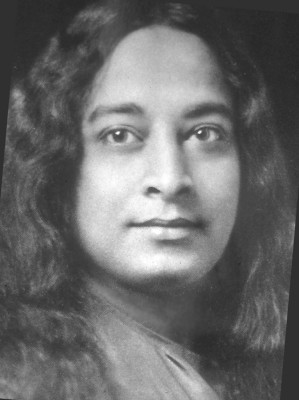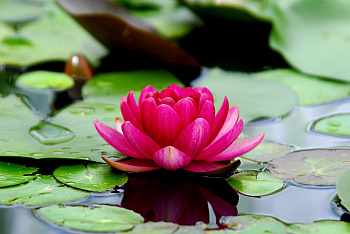Ever since I started teaching meditation, I have heard constant and consistent complaints from students – no matter who I was teaching: “My mind is so restless!” “I’m not very good at concentrating!” Frankly, I find it quite ironic – because these lamentations come from successful businessmen, motivated students, and skilled workers. In other words, people who have also used focus and concentration to thrive and succeed. Even those who have acquired considerable success in the world are often dismayed to find how little control they have over their own minds.
An ordinary business person only uses 25% of their concentration...-Paramhansa YoganandaParamhansa Yogananda, said that an ordinary business person only uses 25% of their concentration because they do not use the scientific methods of concentration discovered by yogis centuries ago. One of the main concentration techniques he taught was the Hong Sau meditation technique.
I have practiced this technique every day for almost four years now. Yet, there are times when I find my mind is totally distracted and I am unable to concentrate. Every serious meditator goes through days (or weeks or months) when the mind just refuses to settle down. Why is it so? Here’s an explanation.
Think of a physically healthy or fit person in your life (If you are thinking about yourself, congratulations!). That person probably has a regular exercise routine, eats a nutritious and balanced diet, avoids intoxicants, gets proper sleep, and drinks enough water. In other words, they follow an all-around, comprehensive approach to their physical health.
Your mental health or concentration abilities also need this meticulous attention. We may think that just a few minutes of meditation every day will help strengthen our concentration. While this is true (and is certainly better than no meditation!), it is not enough by itself. If you spend a few minutes (or hours) meditating every day but spend the rest of your day in a distracted state of mind, you will find it increasingly difficult to still the mind when you sit to meditate.

Paramhansa Yogananda
Yogananda cautioned his students against two harmful mental habits that underlie these patterns that may also be causing tumultuous restlessness. He called these enemies Absentmindedness and Fillers.
Absentmindedness pertains to the sheer dullness of the mind. It’s when the mind sinks into a semi-subconscious state and is either lost in the past or worrying about the future. Some examples include daydreaming when other people are talking, not being completely focused on the task at hand, and letting the mind just wander without any conscious control.
By fillers, Yogananda refers to those activities that merely fill our time during the day without any benefit to our physical, mental, or spiritual health. Examples include random web surfing, checking Instagram while standing in a queue, checking email and messages while driving, using the phone during meals, constantly listening to music, and so on.
These habits may seem innocently small but they are collectively strong and work like a drip system. They harm your concentration abilities one drip at a time until you find yourself unable to fully focus and concentrate – either in meditation or in your work.
Habitual distraction and absentmindedness lead to perpetual restlessness. Restlessness, as Swami Kriyananda said, is the playground of maya (cosmic delusion). When we are restless, we lose contact with God’s presence and we leave ourselves open to be guided by the whims and fancies of the ego.
If you find yourself (like me) fighting with habit patterns of restlessness, here are some tips that you may find useful that have certainly helped me.
Avoid Constant Sensory Inputs
Excessive stimulation burns the nerves, cutting off the supply of energy and upsetting the functioning of the nervous system. -Paramhansa Yogananda
If we constantly bombard our senses with stimulation through social media, messaging, music, TV, and so on, we will burn our nerves and make it difficult to fully enjoy anything.
We learn to sit in silence and live in the present moment by avoiding constant sensory stimulation. Then, when we sit to meditate, we find that we can go much deeper and take less time getting there.
Have Periods of Silence
One of my favorite lessons in Swami Kriyananda’s course, Material Success Through Yogic Principles is titled “Talk Less, Do More.” Swamiji writes that there’s a subtle connection between the tongue and the mind. The more we talk, the more restless the mind becomes. Interestingly, when Swamiji found it difficult to calm his breath in meditation, Yogananda explained, “That is because you used to talk a lot. The influence has carried over.”
The less you talk, the easier you will find to concentrate. Silence will not only help you in meditation but any task that requires concentration. Try to be in silence for at least an hour after waking up. Then gradually prolong that period, using it to dive deeper into meditation and make progress in other creative pursuits.
Avoid Multitasking – One Thing at a Time
Countless studies have shown that multitasking is not only inefficient but also stymies the ability to focus. Always finish one thing before moving on to the next. Then, when you move on to the next task, put all activities or plans aside, until you take the task to completion. This is the way to develop your concentration.
 Even when talking to others, resist the temptation to think about what you need to do later, or where you need to go. The more we consciously listen to others, the more we improve our ability to listen to divine whispers in the stillness of meditation.
Even when talking to others, resist the temptation to think about what you need to do later, or where you need to go. The more we consciously listen to others, the more we improve our ability to listen to divine whispers in the stillness of meditation.
Conscious listening to the world around us is a stepping-stone to hearing the vibration of God in meditation. –Nayaswami Jyotish
You may find this affirmation helpful for developing concentration. Practice the affirmation after your meditation as you begin your day –
Whatever I do in life, I give it my full attention. Like a laser beam, I burn from before me all problems, all obstructions!”
Listen to Calm, Uplifting Music
Select music for its pleasing or uplifting melody, rhythm, and harmony. A melody can do more than entertain: it can uplift; it can fill you with longing; or, alternatively, it can depress you. A rhythm can calm, invigorate, or disturb the nervous system. –Swami Kriyananda, Living Wisely, Living Well
We, like music, are composed of vibrations and are affected by them without conscious choice. Listening to restless and fast rhythmic music will make it more difficult for you to concentrate. Therefore, listen to and sing (even mentally) songs that are calm and uplifting.
Meditation into Activity
As you end your daily meditations and resume your duties, transition carefully and avoid making hasty transitions that steal your meditative peace – checking your email or calling people, for instance. Instead, try to preserve that peace and bring it mindfully into your daily life.
Undertake a few tasks that don’t involve the mind – going for a walk, washing the dishes, cleaning, and so on, while keeping your mind inwardly focused on God. We will learn to feel God’s presence with regular practice, no matter what we are doing or who we are with.
Take Short Breaks
Whenever you get a chance, practice any technique you know to gather your scattered energy and focus your mind. “While others are talking or idly wasting time,” Yogananda said, “You go out into the garden and do a few Kriyas. Whenever you have a free moment, stop, sit down, and do a few Kriyas. What else do you need?”
Japa is another powerful practice to keep your mind focused on God’s presence. Use a simple mantra, chant, or affirmation and mentally repeat it whenever you get time. At first, it seems difficult but with sustained practice, you will find that it becomes effortless.
Your spiritual life is not confined to your morning and evening meditations. It can and should encompass every aspect of your daily life. I hope with the practices above you can work on developing your concentration day by day.

May we all reach the point of feeling God’s blissful presence all the time — everywhere we go, in everything we do, and in everyone we meet.
In Divine Joy,
Shivendra
![]()

2 Comments
Another excellent, and very helpful, article, Shivendra – much gratitude to you for sharing your wisdom!!
Blessings,
David
Thank you for this insightful, practical article. I am following the Ananda Online Meditation course for the second time and it is week 2 – learning about relaxation. I have noticed that my first week (developing a routine) was much troubled by restlessness and the the advice in week 2 has helped regarding how to relax in preparation for meditation. Your article is the perfect complement – explaining how to bring this into daily life !